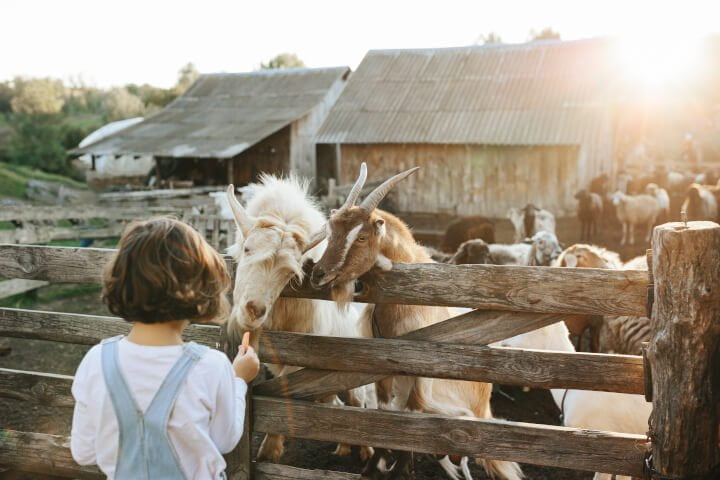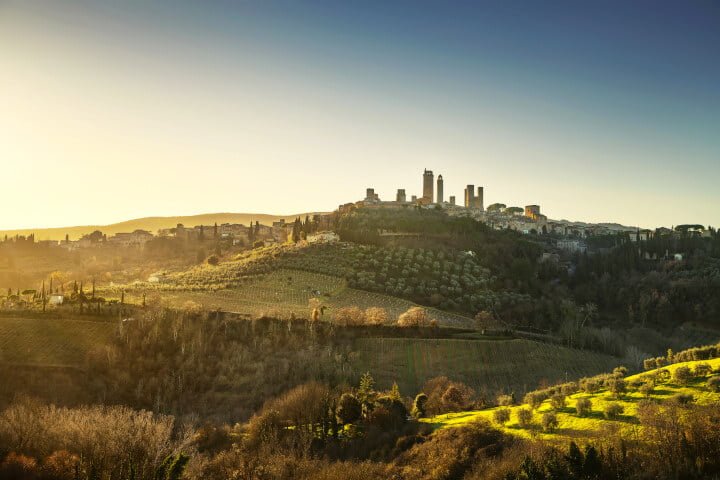Why Destinations Should Promote Agritourism

The pandemic was a change driver in many aspects, including in the way people are choosing to travel. Before mass tourism was the rule, now the modern traveler is seeking slower, more in-depth experiences.
Many destinations from all over the world have noticed this shift in the traveler’s behavior and started investing in forms of tourism that are aligned with this new mindset. This led to the ruralization of travel, and the rise of agritourism.
In this article, we will discuss what agritourism is, its advantages, how DMOs can support this activity and how rural destinations around the world are promoting it.
What is agritourism?
Agritourism has its roots in European countries such as Italy, Spain, Portugal and France. As the name says, it describes tourism activities that take place in rural areas. For example:
- Farm tours
- Petting zoos
- Corn mazes
- Horse riding
- Vineyard tours
- Camping
- Bird watching
Agritourism is considered a type of experiential travel, which refers to activities that require the active participation of travelers and promote a deeper connection with the destination.
This is one of the reasons why agritourism is so attractive for slow travelers and why it has grown in popularity during and after the pandemic.
Get to know the numbers of agritourism

As mentioned at the beginning of this article, the interest in agritourism started during the pandemic and continued to grow after it. So let’s put it in numbers.
According to the 2022 North American Camping Report, camping accounts for 40% of leisure travel trips in the US and Canada.
Another interesting finding of this report is that camping is getting popular among urban residents. Around 44% of this group planned to replace a traditional leisure trip in 2022 with a camping trip, citing current economic conditions and avoiding crowds as key drivers for their decision-making.
Finally, more and more campers are working remotely during their trips. Since, 2019, the percentage of campers who work while camping in the great outdoors rose from 37% to 46%.
Agritourism is rising not only in North America, it is a global trend.
On the opposite side of the globe, in China, rural trips were seeing a year-on-year increase of 300% in 2021 as compared to 2020 according to the Chinese-owned Trip.com Group. Much of it due to the country’s strict policies against Covid-19.
Overall, a recent report shows that the global agritourism market size was valued at USD 5.95 billion in 2021 and is expected to develop at a compound annual growth rate (CAGR) of 11.4% from 2022 to 2030.
The benefits of agritourism

The combination of nature, travel and slow-paced experiences that is part of agritourism has many benefits. Not only for travelers but also destinations and their host communities.
It helps better distribute tourists within a destination
Tourist flow management is one of the main challenges in preventing overtourism. Since agritourism takes place in rural areas, it is a great option to divert visitors from historic centers and popular attractions.
It brings economic benefits to local producers
Agritourism represents an opportunity for farmers that want to diversify their income stream and make money outside of their regular season.
It is attractive for domestic travelers
This is a group that wants to experience something else than the main tourist attractions in their area. They are also looking for experiences they can enjoy during a one-day trip or on a roadtrip.
It promotes sustainability
Many operators working with agritourism are committed to teaching travelers how to live a more sustainable life. Also, agritourism activities can provide the supplemental income necessary for the preservation of small and mid-scale farms, ranches, and rural communities.
How DMOs can support agritourism

Travel restrictions during the past two years have opened the eyes of destination managers for domestic travelers, who have proven to be an important source of income.
For this reason, DMOs are investing and promoting experiences that are attractive for residents and local travelers, such as the ones related to agritourism.
If that’s your goal, here are some actions you can put in place to help agritourism flourish at your destination.
Collaborate with agricultural communities
Establishing a connection with rural communities, their representatives and organizations is the first step in creating an agritourism plan for your area.
It’s very important to listen and address local producers’ needs. Also, destinations should educate them on how to start a travel business, the benefits of diversifying their activities and offer training on the best practices to receive visitors.
Invest in hyper-local and responsible travel marketing
Attracting domestic and eco-conscious travelers is key for destinations with their tourism activity based in rural areas. With that in mind, destination marketers should fine-tune their strategy to target these types of travelers.
DMOs can do that by offering pre-made itineraries that highlight rural attractions, natural sights, small villages and experiential travel activities. Also, consider promoting roadtrip itineraries as it was the most popular type of travel in 2022 and it’s very popular among domestic travelers.
Educate locals and tourists about sustainable practices
Although many have opened their eyes to sustainability in travel, especially after the pandemic, educating travelers is a continuous work in progress.
This is something the private and public sectors, jointly with marketers should address. Together they should inform travelers and locals about sustainable practices and show that their destination is committed to sustainability.
Implement technologies to better distribute tourists within the destination
The modern traveler is hyper-connected. Destinations should take this fact to their advantage and use technology, such as mobile apps, reservation systems and navigation devices to drive visitors to lesser-visited areas.
The first step is digitalizing the local tourism offer so it can be easily found and booked by travelers. A good example comes from Moslavina, a county in Croatia which has implemented its online marketplace.
The tool gathers all the most relevant travel activities in the destination, which makes it easier for travelers to find things to do, at the same time it gives operators another channel to promote and sell their tours.
Upgrade the infrastructure of rural areas
Agritourism activities usually take place far from urban centers. For this reason, municipalities must assure basic infrastructure in these areas for a better traveler’s experience.
We are talking about well-signposted roads, cycling paths, street lighting, and internet access. All these items are taken into consideration by travelers when planning their trip.
The best tourism villages

UNWTO has an initiative called Best Tourism Villages. The idea is to highlight villages around the world where tourism preserves cultures and traditions, celebrates diversity, provides opportunities and safeguards biodiversity.
Last year’s edition recognized 44 as Best Tourism Villages. Let’s take a look into what two of them have done to receive this recognition.
Italy’s smart village
San Ginesio has 3,200 inhabitants and is located in a rural area in the Marche region in Italy. The place is famous for its artistic heritage, which includes churches and theaters, for its culture that goes back to the Middle Age, and for the astonishing nature that surrounds the town.
The small village was selected by UNWTO not only because of its rich history and beautiful landscapes but also for its investment in smart tourism. For the past years, the village has promoted its tourism attractions through its portal as well as through its province portal.
The community is also a member of the SAVE THE APPS initiative – a project that includes an e-commerce platform for local produce and digital maps to help tourists discover ancient monasteries and churches.
They also care for the tourists’ and residents’ wellbeing. The village invests in advanced programs on digital medicine and the prevention and management of earthquakes and other natural disasters.
A progressive rural community in the Philippines
Aloguinsan, Philipines, is another example of a destination that decided to invest in its rural potential to attract travelers.
Since 2009, the small village of Bojo, located in the municipality, has been receiving visitors looking for river tourism. Seeing the benefits of this activity for its residents, the community decided in 2013 to recraft its tourism vision. Their idea was to gain international recognition as a sustainable and people-centered location, committed to natural and cultural heritage preservation.
To reach this goal they have implemented projects in education, health and sanitation, environmental management, women empowerment and heritage protection. They also improved the community’s basic social services including street lighting, garbage collection and preservation of the village’s cultural traditions.
As a result, more than 3,000 locals benefited from the opening of new job opportunities and the reinvestment of tourism income into their community.
Conclusion
Agritourism is a good option for destinations looking for becoming sustainable and attracting domestic and eco-conscious travelers.
It is considered sustainable because it prevents tourism leakage and overtourism, generates job opportunities in lesser-visited areas, helps preserve nature and promotes sustainable practices.
Local and eco-conscious travelers prefer agritourism experiences because they lead to a deeper connection between travelers, nature, and the local community.
If you want to promote agritourism in your destination you can start with the following:
- Collaborate with agricultural communities
- Invest in hyper-local and responsible travel marketing
- Educate locals and tourists about sustainable practices
- Implement technologies to better distribute tourists within the destination
- Upgrade the infrastructure of rural areas
Do you need help in digitalizing your destination’s offer and highlighting lesser-visited areas and out-of-the-beaten-track attractions?
Smart Destination is a crew of award-winning tech companies specialized in travel, tourism and hospitality. We offer step-by-step guidance for destinations, tour operators, travel agencies, hotels, camps and vacation rentals to help them create innovative digital solutions that bring value to the entire community.
Click here to learn more about our work or contact us to learn how we can help your destination give the first step towards smart tourism.




